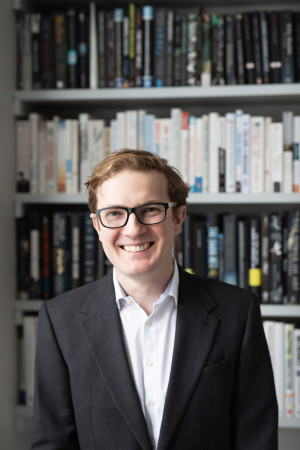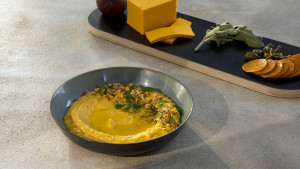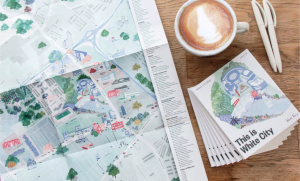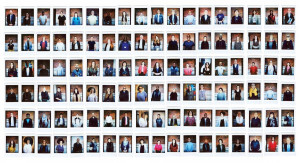In conversation with Henry Coutinho-Mason
Delving into the “Future Normal” to inspire greater innovation today

We recently had the opportunity to sit down with reluctant futurist Henry to talk about his new co-authored book “The Future Normal” and why writing it has confirmed his sense of optimism. Henry has always been preoccupied with the way the world works. After spending a decade uncovering trends as managing director of TrendWatching, he is now focused on surfacing and sharing insights that can help pave a way to a better tomorrow.
You describe yourself as more of a ‘now-ist’ than a futurist, what does that mean?
“Futures” thinking can be quite opaque and doesn’t always have the impact it could or should. When I met co-author Rohit we were aligned on wanting to write something more accessible, that would demystify this kind of thinking and be useful for people.
A lot of conversations about the future focus on what is going to be different, whereas I’m also interested in how life might stay the same. And critically, what we want to become normal. It’s not about prediction, it's about asking questions that can help us think about a whole range of possible futures and which ones we want to bring into being.
There’s a famous cliché “the future is already here, it’s just unevenly distributed”, which like most clichés has some truth in it. There is already so much innovation happening. I’m interested in putting that innovation in front of someone in a different situation or sector and saying ‘what does this mean for you’ or ‘what can you take from this’. Looking at stories of what is happening now, as a starting point for thinking about the future, and to create some competitive tension, I believe is a lot more productive.
Has the experience of writing this book made you do anything differently?
I think having our second child at the same time as writing the book had an impact. It can’t help but make you think about their future, rather than just your own. It gets you more invested in wanting to find solutions and scale them. Which is maybe one of the reasons this book has an activist agenda. We hope it will inspire people and bring hope.
Are there any innovation ‘Instigators’ featured in your book that you found particularly interesting?
So many! 15 minute cities, closing the generation gap, psychedelic wellness…
An interesting example of how innovation has crossed sectors is on the theme of virtual companions. We spotted signals of this around 2015, via a news story about a job ad that was out for a psychologist to work on Apple's Siri (though the sci-fi movie Her explored this space a few years before). It seemed people were asking emotional questions of virtual assistants. A niche and emerging behavior at the time. But it spoke to an underlying human need and you could see its potential to scale, especially as the technology improved. Of course, millions of us are now 'talking' to virtual AI chatbots such as ChatGPT. One way it is being used for social good, featured in the book, is through a Cognitive Behaviour Therapy-based chatbot called Woebot. This is an affordable, accessible and, perhaps surprisingly, effective way of getting mental health support to those who need it; indeed some patients have reported preferring their virtual therapist to a human one.
While looking at lab-grown meat, we also realised that the current wave of synthetic products could profoundly change the marketing and branding industry. We’ve been so used to thinking of ‘natural’ as better, but ‘synthetic’ meat will be better in so many ways – more environmentally friendly, no harm to animals and so on. Lab-grown foie gras could be back on the menu. Similarly in fashion, people will fall in love with 'synthetic' leather and fur – not low grade alternatives made from fossil fuels, but luxurious replacements that are cellularly identical to the 'real' thing. What's interesting is that we've been here before, when in the 1950’s synthetics like nylon were popular. So trends do have a habit of coming back around.
Solein Protein powder is another great example, divorcing food production from agriculture. Solutions like this allow us to think differently.

What I will say though is that the market is too complex now for things to totally ‘die off’. Two trends can happen at the same time, in the same sector, and even the same person. We are complex. For example the rise in popularity of both Spotify and vinyl records at the same time, often embraced by the same person.
How do you stay optimistic about the future?
I feel very privileged to have met such a broad range of interesting people during the course of writing this book. The volume of innovation out there is huge. It’s hard to be pessimistic when you have the opportunity to witness that day in and day out.
The solutions are out there. A good question to ask yourself is does your media diet bring that to your attention? You need to actively manage your media and information diet in the same way as watching what you eat.
What other advice would you give to people that want to help build a positive future?
Change is not easy. But we’ve never had access to such a global hive mind of information. It’s never been easier to make the case for change. In large organizations there are barriers but also often an awareness of disruption, the need to attract and retain talent and appetite to engage in innovation. There is so much to learn from in adjacent industries, and so many stories out there for all of us to be inspired and influenced by.
You can buy Henry’s new book “The Future Normal” on Amazon here.



